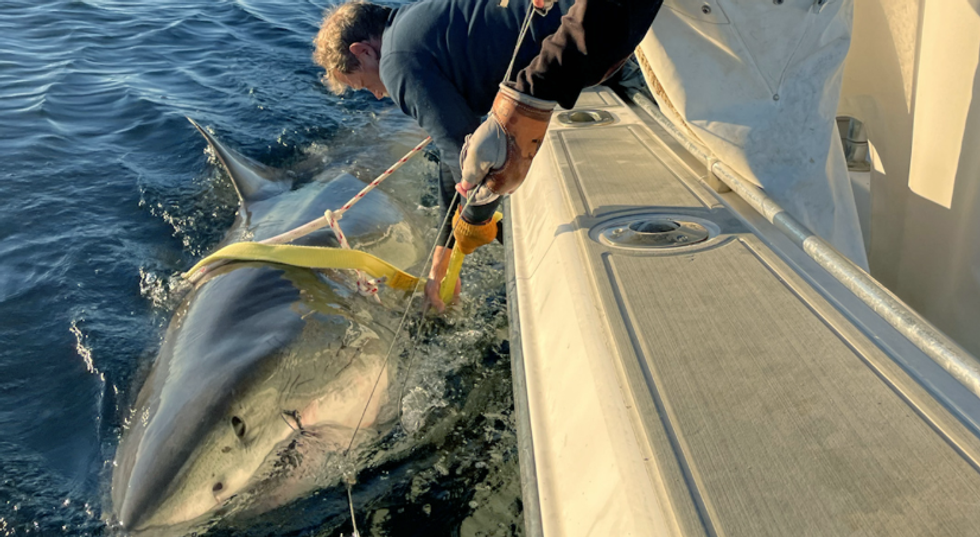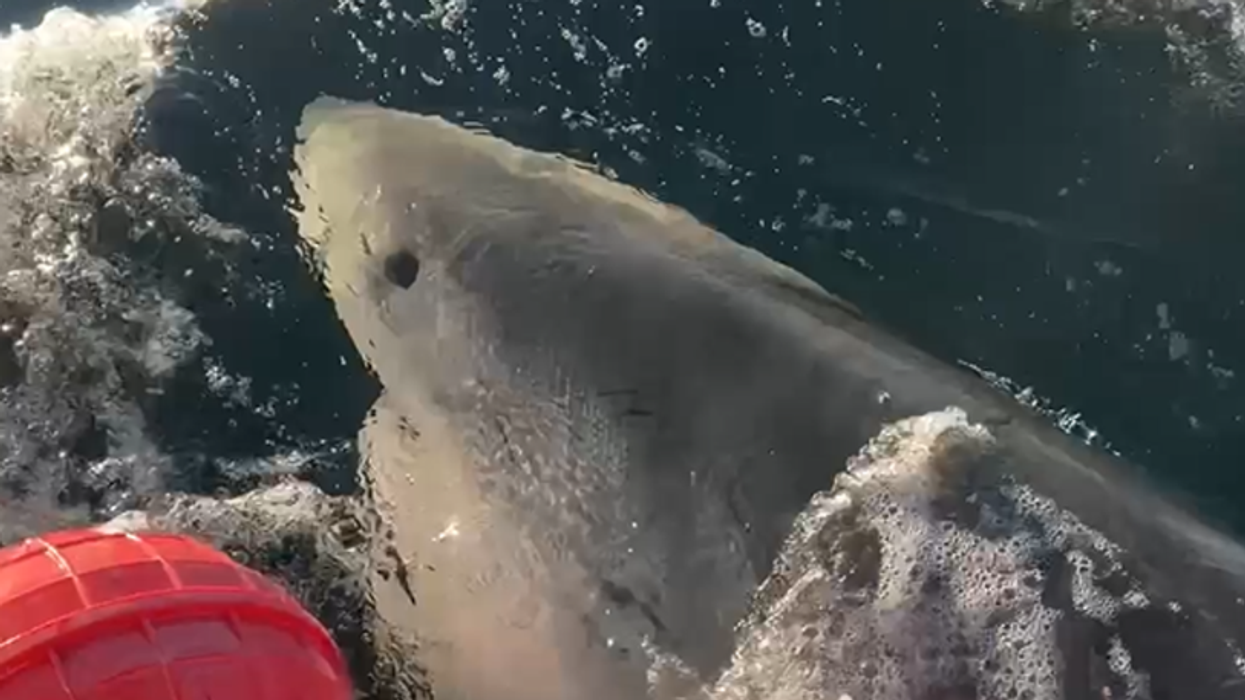The largest adult male great white shark ever recorded in the Atlantic Ocean has been tracked near the coast of North Carolina, according to the marine research group OCEARCH.
The shark, named Contender, measures nearly 14 feet (4.3 metres) in length and weighs an estimated 1,653 pounds (750 kilograms). He is the largest male great white shark tagged by OCEARCH in the Atlantic to date.
Tracking a giant predator
Contender was tagged in January 2025 off the Florida–Georgia coast by OCEARCH, a non-profit organisation that studies marine life such as great white sharks, whales, and sea turtles.
His movements are monitored through a satellite tagging system. A “ping” is recorded whenever Contender’s dorsal fin breaks the surface and a nearby Argos satellite detects the signal.

Since being tagged, Contender has been swimming up and down the eastern coastline of the United States. In March, he was detected moving north from Florida. By April, he was pinged near the North and South Carolina border.
His most recent ping was on Saturday, 7 June, approximately 22 miles (35 kilometres) off Cape Hatteras, North Carolina – a region known for its popularity among tourists and as a hotspot for shark activity.
Seasonal migration and shark research
OCEARCH scientists estimate Contender to be about 32 years old, making him a rare specimen among male great white sharks, which typically do not grow as large as females.

According to the researchers, great white sharks often migrate during spring and early summer in search of cooler waters and more abundant prey.
Contender’s movements and those of other sharks can be followed using the free OCEARCH Global Shark Tracker app, which allows the public to engage with ongoing shark research and marine conservation.







 During summer and autumn, when snow is absentiStock
During summer and autumn, when snow is absentiStock





